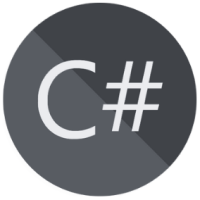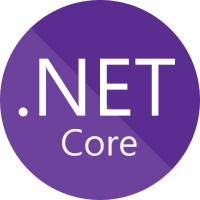Properties in C#

C# Programming For Beginners Free Course
Properties in C#: An Overview
A Property acts as a wrapper around a field. It is used to assign and read the value from a field by using set and get accessors. The code block for the get accessor is executed when the property is read and the code block for the set accessor is executed when the property is assigned a new value. A property can be created for a public, private, protected, and internal field. So in this C# Tutorial, we will explore more about properties in C# which will include,c# property with real-life examples, Different types of properties, when to use property with example, advantage of the property, What is a static property, and abstract property.
What is Property in C#?
- Properties are used for a class to expose a public way of getting and setting values while hiding implementation or verification code.
- To return the property value, a get property accessor is used and a set property accessor is used to assign a new value.
- An init property accessor is for assigning a new value only during object construction. These accessors can have different kinds of access levels.
- Properties can be read-write(get, set), read-only(get), or write-only(set).
- Write-only properties are used to restrict access to sensitive data.
- Properties do not denote storage locations and you cannot pass a property as a ref or out parameter.
Example of Properties:
using System;
class Example
{
string name;
public string Name
{
get { return name; }
set { name = value; }
}
}
class Program
{
static void Main()
{
Example obj= new Example();
obj.Name = "ScholarHat"; // called set { }
Console.WriteLine(obj.Name); // called get { }
}
} Output
Scholarhat
Read More - C# Programming Interview Questions
Different types of properties
Properties can be divided into three categories read-only, write-only, and read-write properties.
Read-Only Property
A read-only property allows you to only retrieve the value of a field. To create a read-only property, you should define the get accessor.
class Example { string name; public string Name { get { return name; } } }Write-Only Property
A write-only property allows you to only change the value of a field. To create a write-only property, you should define the set accessor.
class Example { string name; public string Name { set{ name = value; } } }Read-Write Property
A read-write property allows you to assign and read the value of a field. To create a read-write property, you should define the set and get accessors.
class Example { string name; public string Name { get { return name; } set { name = value; } } }
Auto-implemented property
- Auto-implemented properties were introduced with C# 3.0, which makes property declaration more concise.
- Unlike standard property, in auto-implemented property, a wrapped or backing field is automatically created by the compiler but it is not available for use by the class's members.
- public int Name { get; set; }
To make an auto-implemented property read-only or write-only, you need to specify both get and set accessors.
public int ReadOnly { get; private set; }
public int WriteOnly { private get; set; } Simply, you need to store a value. No additional functionality can be added to either of the accessors.
Static property
You can also declare a property static. To make a static property you must ensure that the backing store field is also static. Typically, a static property is used to make a singleton class.
public class Singleton
{
private static Singleton instance = new Singleton();
private Singleton() { }
public static Singleton GetInstance
{
get { return instance; }
}}Abstract property
An abstract property declaration does not provide an implementation of the property accessors. It leaves the implementation of the accessor to derived classes. Abstract properties are declared within an abstract class or interface.
public abstract class Person
{
public abstract string Name{ get; set;}
}
class Student : Person
{
private string name;
// Override Name property
public override string Name
{
get { return name; }
set { name = value; }
}
}
public interface IPerson
{
string Name { get; set; }
}
class Student : IPerson
{
private string name;
// implement Name property
public string Name
{
get { return name; }
set { name = value; }
}
}
When to use Properties in C#
- Need to validate data before assigning it to a field.
- Need to do intermediate computation on data before assigning or retrieving it to a field.
- Need to log all access for a field. Need to protect a field by reading and writing.
Advantages of properties in C#
- It provides better control of class members and avoids the complexity of the code.
- It ensures the security of the data fields.
- It also validates the data before storing it in the data fields.
- Fields made of read-only or write-only using the properties.
- Properties also make the program flexible, which means the programmer can change one part of the code without affecting other parts.
Conclusion
I hope you will enjoy the property in C# while programming. I would like to have feedback from my blog readers. Your valuable feedback, questions, or comments about this article are always welcome. Also, consider our course C# Programming for a better understanding of C# Concepts.FAQs
Q1. What is field and property in C#?
Q2. What is public properties in C#?
Q3. Why use properties in C#?
Q4. What are properties in programming?
Take our free csharp skill challenge to evaluate your skill

In less than 5 minutes, with our skill challenge, you can identify your knowledge gaps and strengths in a given skill.







